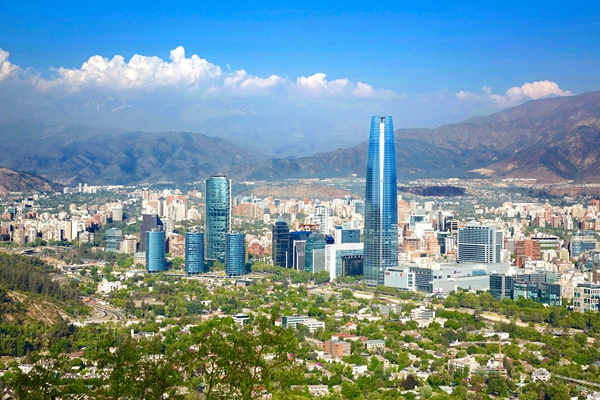

A view of the Santiago Metropolitan Region. [Photo/fao.xm.gov.cn]
The Santiago Metropolitan Region, located in central Chile, is the political, economic, cultural and transportation center of Chile.
The region spans 15,400 square kilometers and has a population of about 8 million. Both its population and gross domestic product (GDP) account for more than 40 percent of the country's total.
The region has jurisdiction over six provinces, including Santiago, Chacabuco, Cordillera, Maipo, Melipilla and Talagante, and 52 municipalities.
The city of Santiago is the capital of the region as well as the capital of Chile and Chile's industrial and financial center. The region has no administrative affiliation with the city of Santiago.
Xiamen and the region signed a letter of intent for friendly exchanges online on April 6, 2022, marking the official establishment of friendship between the two places.
The pillar industries of the region include manufacturing, services, retail and financial services. The region also has an excellent transportation network, with an international airport and five subway lines.
The Pontifical Catholic University of Chile in the region is ranked second in South America and first in Chile. It was ranked 135th in the QS World University Rankings 2022. The University of Chile, which was ranked 183rd in the QS World University Rankings 2022, is also located in the region, and is one of the oldest universities in the Americas and one of the most prestigious universities in Latin America.
Several United Nations (UN) agencies have Latin American headquarters in the region, and many of Chile's historic wine cellars are also located in the region.

